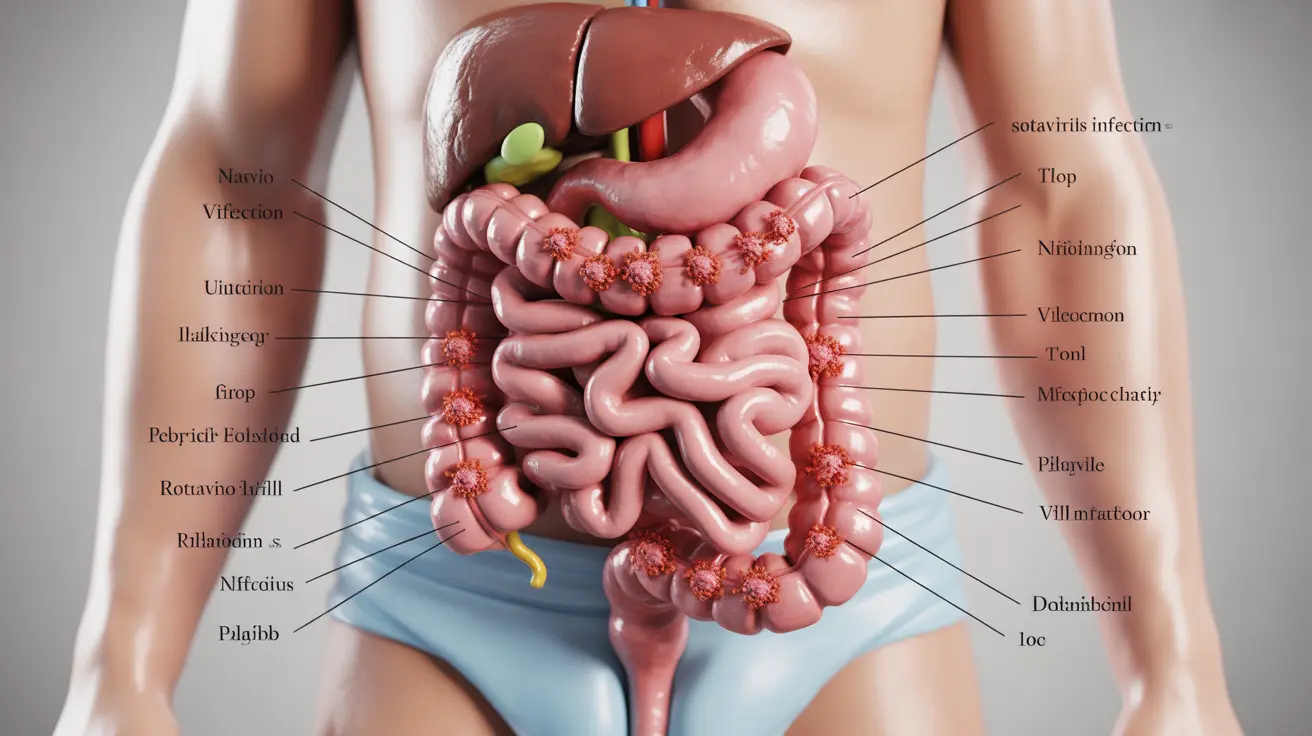Rotavirus is a highly contagious viral infection that primarily affects infants and young children, causing severe diarrhea and dehydration. This common childhood illness can be particularly concerning for parents, as it spreads easily in daycare centers, schools, and households. Understanding what rotavirus is and how to manage it is crucial for protecting your child's health.
While rotavirus can affect people of all ages, children under five years old are most vulnerable to severe symptoms and complications. The good news is that with proper prevention measures and available vaccines, parents can significantly reduce their children's risk of infection.
What Is Rotavirus and How Does It Spread?
Rotavirus is a resilient virus that primarily attacks the intestines, leading to gastroenteritis. The virus spreads through the fecal-oral route, meaning that infected individuals can transmit the virus through contaminated hands, surfaces, or objects. The virus can survive on surfaces for days, making it particularly challenging to control in settings where young children gather.
Children typically contract rotavirus by:
- Touching contaminated surfaces and then putting their hands in their mouths
- Sharing toys or objects with infected children
- Consuming food or drinks that have been contaminated
- Having close contact with infected individuals
Common Signs and Symptoms
Rotavirus infection typically develops within two days of exposure. The main symptoms include:
- Severe watery diarrhea (lasting 3-8 days)
- Vomiting
- Fever
- Abdominal pain
- Decreased appetite
- Dehydration
Recognizing Dehydration in Children
Parents should watch for these signs of dehydration:
- Decreased urination or dry diapers
- Dry mouth and lips
- Lack of tears when crying
- Unusual sleepiness or irritability
- Sunken eyes or cheeks
- Cold hands and feet
Diagnosis and Treatment Approaches
Healthcare providers typically diagnose rotavirus based on symptoms and physical examination. In some cases, they may test a stool sample to confirm the diagnosis, especially in severe cases or during outbreaks.
Treatment focuses primarily on preventing dehydration and managing symptoms. Key treatment strategies include:
- Oral rehydration solutions to replace lost fluids and electrolytes
- Continued feeding with age-appropriate foods
- Gradual return to normal diet as symptoms improve
- Rest and monitoring
Prevention Strategies
Vaccination
The rotavirus vaccine is the most effective prevention method. The CDC recommends that infants receive:
- First dose: 2 months of age
- Second dose: 4 months of age
- Third dose (if needed): 6 months of age, depending on the vaccine brand
Hygiene Practices
Additional prevention measures include:
- Frequent handwashing with soap and water
- Regular disinfection of surfaces and toys
- Proper diaper disposal
- Isolation of infected individuals when possible
When to Seek Medical Care
Parents should contact their healthcare provider immediately if their child shows:
- Signs of severe dehydration
- Bloody stools
- High fever
- Severe abdominal pain
- Symptoms lasting longer than a week
- Inability to keep liquids down
Frequently Asked Questions
What is rotavirus and how does it commonly affect children?
Rotavirus is a viral infection that causes severe gastroenteritis in children, primarily affecting those under five years old. It typically leads to severe diarrhea, vomiting, and can cause dangerous dehydration if not properly managed.
What are the signs and symptoms of rotavirus infection in infants and young children?
Common symptoms include severe watery diarrhea, vomiting, fever, abdominal pain, and signs of dehydration. Symptoms usually appear within 2 days of exposure and can last for up to a week.
How is rotavirus infection diagnosed and treated in children?
Diagnosis is usually based on symptoms and physical examination, sometimes confirmed through stool testing. Treatment focuses on preventing dehydration through oral rehydration solutions and managing symptoms while the virus runs its course.
What are the best ways to prevent rotavirus, including vaccine schedules?
The most effective prevention is vaccination, typically given in 2-3 doses starting at 2 months of age. Other prevention methods include proper hand hygiene, regular surface disinfection, and proper diaper disposal.
When should I seek medical care for a child with rotavirus symptoms?
Seek immediate medical attention if your child shows signs of severe dehydration, has bloody stools, high fever, severe abdominal pain, or if symptoms persist for more than a week.




